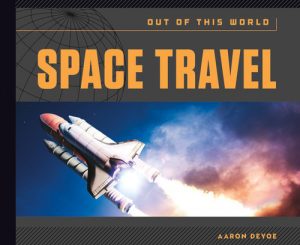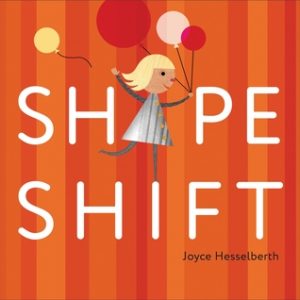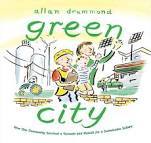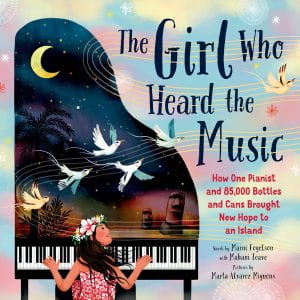
Deyoe, Aaron. Out of this World: Space Travel. Minneapolis: ABDO, 2016. 978-1-62403-745-0. 24 pp. $16.95. Gr. K-4.
This book is a simple look at the various forms of space travel throughout history. It has full color illustrations, easy to understand diagrams and graphics, and short concise sentences throughout. It covers forms of travel such as rockets, space shuttles, Saturn V rockets, satellites, and many more. A diagram of the International Space Station describes its various components and shows how it was assembled in stages in space. This text also includes the latest rovers and mechanized explorers that are sending back data and are much safer than sending humans to these remote locations. THOUGHTS: This book is a great addition to a collection of books about space and planets. Students will be encouraged to pick a type of space travel or vehicle and research more about that topic, since this is a simplistic look at each. This is a great “jumping off point” for such a research project.
Space Exploration Donna Fernandez, Calvary Christian Academy

Hesselberth, Joyce. Shape Shift. New York: Henry Holt and Company, 2016. 978-1-62779-057-4. 32pp. $16.99. Gr. K-3.
In this abstract introduction to the basic shapes of triangle, semicircle, crescent, trapezoid, rectangle, circle, oval, diamond and square, Hesselberth challenges the imagination. First, the characters put a triangle on top of an upside down semicircle. They imagine what that could be, and the illustrator creates a ballerina. Then, another character imagines that the same two shapes are an elephant being carried away by balloons. These imaginative and interesting shape shifts create many different possibilities for each combination of shapes. At the end of the book, the author provides several combinations for the students to imagine what they could be together. This is an interesting mash-up of learning shapes and critical and creative thinking. Each new illustration has an inset with the original two shapes to help the children see how those two shapes became the new picture. An interesting and thought provoking look at the world of shapes! THOUGHTS: After reading this book, the teacher could provide students with cut out shapes and have them create scenes or items using two or more shapes. Students would need to name each shape used and then explain what it was and perhaps even generate a story to go with their shape creation. An activity could also be created for the smart board that allows students to drag two shapes together to create a new picture or touch and identify the basic shapes presented in the book.
Shapes; Picture Book Donna Fernandez, Calvary Christian Academy

Smith, Danna. Swallow the Leader: A Counting Book. New York: Clarion, 2016. 978-0-544-10518-8. 32pp. $16.99. Gr. Pre-K-1.
The little orange fish begins this rhyming counting book. With each number there is an action “5 fish-Follow the Leader- Play like I play. Pretend you are me. Flap like ray.” At the number ten, the fish says to open their mouth and eat a snack, and swallow the leader. As they gulp down the fish in front of them, they count DOWN to one again. Until only Shark is left. But wait, Shark is about to BURP! The bright fun graphics are visually pleasing and the happy ending is a delight. THOUGHTS: This book is sure to be a hit with the little ones. They are able to count, act out the motions of “flapping like a ray” and other silliness, and then count down to one again. Of course a big BURP is always funny, and the counting begins again!
Counting Book Donna Fernandez, Calvary Christian Academy

Drummond, Allan. Green City. New York: Frances Foster Books, 2016. 978-0-374-3799-5. 36pp. $17.99. Gr K-3.
On May 4, 2007, a tornado destroyed the entire town of Greensburg, Kansas, in just nine minutes. Everything was flattened: homes, offices, churches, stores, the water tower, and the school were completely gone. The day after the storm, townspeople gathered in a large emergency tent and began asking the big question: What do we want to be now? People started talking about how to build again. They agreed on ideas like designing tornado-proof houses and making sure the homes were energy efficient, but the word “green” popped up again and again as well. The ideas of sustainability and not using more than one needed resonated with the Midwesterners, and they decided to design not just green homes but an entirely green city. Loose watercolor illustrations depict the construction of super-strong, sustainable structures all over town. Sidebars highlight additional information about what sustainability looks like, and a special “Tips for Going Green” section shares ways students can incorporate some of these ideas into their own lives. THOUGHTS: This title is a great resource for students studying severe weather or energy efficiency. It would also make a nice read-aloud for Earth Day, and it leads itself to discussions about ways we can “go green” in our own lives.
Nonfiction Picture Book Anne Bozievich, Friendship Elementary, Southern York County
 Fogelson, Marni, and Mahani Teave. The Girl Who Heard the Music: How One Pianist and 85,000 Bottles and Cans Brought New Hope to an Island. Sourcebooks Explore, 2023. 978-1-728-26231-4. $18.99. 32 p. Grades K-3.
Fogelson, Marni, and Mahani Teave. The Girl Who Heard the Music: How One Pianist and 85,000 Bottles and Cans Brought New Hope to an Island. Sourcebooks Explore, 2023. 978-1-728-26231-4. $18.99. 32 p. Grades K-3.




